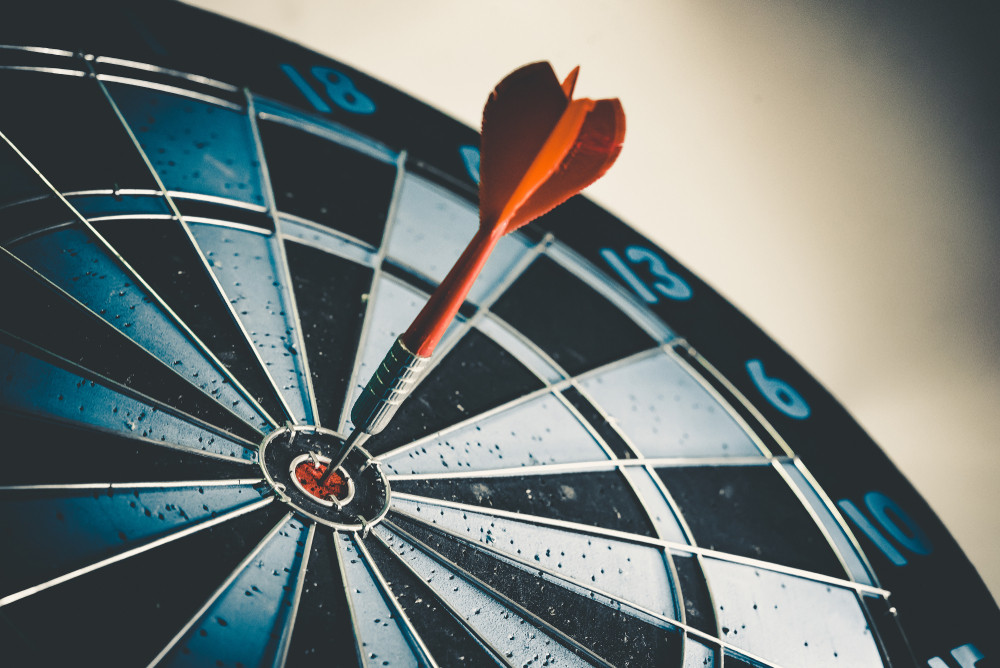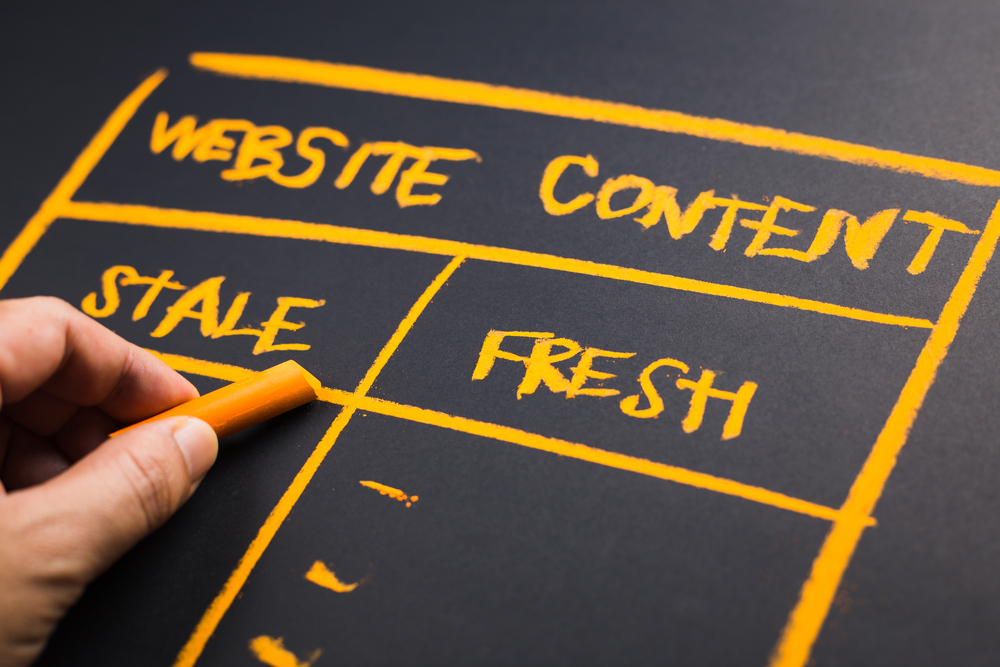Goal Setting & Target Audiences for Lawyers
Goal setting and determining target audiences are critical and necessary steps to putting together a successful content marketing strategy for lawyers. Your goals should drive what target audience you seek to reach. Identifying and understanding the right target audience should influence decisions like the communication channels you use to reach them – such as a website, social media page or direct mail campaign.
Lawyers could want to grow their business and brand in a variety of ways, including:
- Improved reputation and authority.
- Higher standing among competitors.
- Stronger relationships with potential clients or other firms.
- Promote awareness of important or changing legislation.
- Become known advocates for change related to their area of law.
- Garner new clients or referrals.

By identifying what you want to achieve and setting a specific goal, lawyers can then use key performance indicators (KPIs) to measure success or make adjustments. A clear and concise target audience will help determine the measurable KPIs that collect and report audience data. Taking this information and analyzing it will show whether a content marketing campaign is successfully reaching and engaging its potential target audience.
Knowing what you want to achieve (goals) and who you need to engage (audience) are vital components of content creation and an effective content marketing plan.
Goal Setting for Lawyers
Everyone has a goal in business, including lawyers. Some are achievable, while others could be out of reach. What do you want to accomplish this quarter? A growth in clients, an expansion into a sub-specialization of your expertise? There are thousands of possible goals, depending on what you want to achieve, and skipping this step will negatively impact the outcomes of your content marketing efforts.
We’re going to show you how to craft goals that are clear, defined, and within reach. A common goal is to grow your client list based on a practice area.
Using SMART goal setting, lawyers can position their content marketing strategies and campaigns to be the best they can be and worth the resources to achieve goals.
Specific
By creating a specific, detail-oriented goal, you’re more likely to achieve it. Concrete details within a goal ensure it can be measured and it’s easy to determine whether it was achieved. Specific goals make it easier to create a clear, strategic pathway to make it happen.
On the other hand, if a lawyer’s goal is vague, it’s difficult, if not impossible, to determine how to reach it and how to measure success. Using clear, concise language instead is the cornerstone of effective goal setting.
Measurable
The strongest goals include a method to confirm its success or failure. By crafting a goal that can be measured with at least one, if not several, KPI, lawyers can determine whether the goal was achieved. For example, suppose your goal is to increase the number of automobile accident cases you handle this year. In that case, it should include an exact number or percent increase of new cases you’re striving for so that it can be directly measured.
Attainable
We know lawyers want to be successful at achieving goals, but they need to be realistic. Create an attainable and reasonable goal based on your firm’s resources – time, skills, and finances – available. If you don’t have a dedicated marketing team, don’t set a goal that requires the work of a full-time employee. You may decide to hire a content marketing firm for specific business goals.
If you’re trying to increase your number of auto accident cases, think about what’s reasonable for the number of new clients you can onboard during the next month, quarter or year. Consider the number of current clients you have, average yearly cases, and your resources when choosing what to strive for. Don’t pick a number you know you can easily achieve, but don’t reach too far either. Also, avoid generalizing goals by using vague measurements like an increase in cases instead of a minimum number of new cases.
Relevant
Select a goal that is relevant to your business. As a personal injury lawyer specializing in auto accident cases, you wish to attract those injured in a car accident, not those who need patent law support. Strong goals connect directly to your practice areas.
Timely
Time is a necessary component of effective goal setting, so your goal should state the date or time it starts and finishes. By including a time period, you’ll know when to measure results. At this point, if you’re close to meeting your goal, you may decide to extend the deadline; if not, now’s the time to evaluate what went wrong. Was it unrealistic, not enough time was allotted, or were the content marketing strategies you used unsuccessful? Deadlines also help plan relevant tasks and create a sense of urgency to ensure it’s taken seriously.
A sample goal may look something like this. As a personal injury lawyer, I wish to grow by ten new clients in Quarter 4 (January to April). Success will be measured by the number of personal injury clients onboarded by my law firm during this time. As part of the evaluation process, the new clients will be asked how they heard about our law firm to track if our marketing campaign led to increased business.
This goal is specific and contains details like the number of new clients, time period, and method of measurement.
Goals need to be measured. The results of a lawyer’s content marketing campaign should guide decisions about what content to invest in for the future; results give direction and purpose to the messages and calls to action within the content you distribute. Effective content marketing becomes a cycle of setting goals, identifying target audiences, using strategies and tactics to meet goals, and measuring efforts.
Identifying Target Audiences for Lawyers
 One of the most challenging portions of content marketing for lawyers is identifying and understanding the target audience. Your target audience is the people you’re trying to reach through the communication channels available to your firm. This step involves researching relevant audiences to determine who has the most value to achieve your law firm’s goals.
One of the most challenging portions of content marketing for lawyers is identifying and understanding the target audience. Your target audience is the people you’re trying to reach through the communication channels available to your firm. This step involves researching relevant audiences to determine who has the most value to achieve your law firm’s goals.
For personal injury lawyers, one of your target audiences is individuals injured through a no-fault accident. Still, you need to be more specific to define who they are and how to reach them properly. What else do you know about potential clients?
To clearly define your target audience, start with demographic details. This information provides a snapshot of their gender, geographical location, education level, income level, and preferred communication channels. What’s learned might provide enough information to put together your ideal target audience persona.
Many communication channels used to reach your ideal audience track demographic data. Social media pages have valuable insights that will provide you with a snapshot of your audience, but there’s a lot you can learn about your website traffic.
Google Analytics and Google Search Console can track extensive website performance and audience data. This information can be customized through reports and built-in filters and functions that reveal specifics on who’s accessing your site and who it’s engaging. Who’s going to your site, including their personal preferences and interests, the search terms used to get there, country of origin, and the device they used are just some of the data available with Google Analytics and Search Console. In addition, the pathways they take, what engages them, top-performing pages, and where they exit your site are also available.
The more information you have about your potential target audience and the more detailed your definition of who they are, the better a content marketing strategy for lawyers will be.
Tone of Voice
An important factor to consider is the tone of voice used in your content. Is it friendly or written in formal legal language? Your tone should reflect the needs of the audience you’re targeting. While other lawyers or law firms you may target for referrals should be spoken to in a professional manner, potential clients need a different tone.
A lawyer’s tone should be approachable and align with your law firm’s brand. Customers and clients in all industries expect businesses to be personable; potential clients should feel the tone of your content is empathetic and friendly. How they view your law firm should be echoed in your website content, like blog entries that voice and empathize with the struggles injured clients may face.
By using the proper tone to convey your best attributes as a lawyer, your content will resonate with your target audience. When one of your audiences is people looking for a personal injury lawyer, those looking for legal advice expect expertise, but also a business that cares, shows feelings and has clear motivations.
Language and Readability
The language lawyers use throughout their content marketing efforts should be based on their goals and the target audiences they define. If you were an appliance repair person, you need to clearly convey your services and pricing to a target audience that may not understand the intricacies of the work. The same approach is important for the legal industry.
Lawyers have specific expertise and practice areas, but in order to reach and engage potential clients, you need to speak their language. This may mean having your website translated into other languages, but for the most part, it means using language that resonates with your target audience.
Using the right language on your website and through other communication channels, like social media and email newsletters, makes you more likely to be viewed as approachable. Why? Explaining confusing but relevant legal terminology in simple terms helps clients understand their legal situation and how your law firm can help. This will naturally keep the readability level of your content lower, another key factor in connecting with your audience.
The average American newspaper readability level is set for a Junior high school education so that the average reader can understand their content. Some websites are written at this level, but most are written at a much higher education level. For websites, lawyers should follow what newspapers do and write at a lower reading level because it’s more appropriate for your audience.
To ensure the right readability for potential clients, use shorter sentences, shorter / fewer hard words (two syllables or less), and more nouns. Ensure your website and blog is scannable by using subheadings, especially for longer content. Bulleted lists are also effective because they’re easy to scan and create white space. Consider using an inverted pyramid style of writing, where you begin with the conclusion and build backward with supporting details.
Related: How Users Read on the Web
When writing for potential and current clients, remember that they’re not legal experts like you. Most want to know how you can help them – not read formal, legal jargon and terminology. Try to position yourself with a problem-solution focus. Many Americans with personal injuries understand that they need legal expertise. By positioning your content marketing efforts with solutions to legal challenges, your brand, reputation, and persona will be positively affected.
Communications Channels for Lawyers
Depending on your law firm’s target audience, specific communication channels can be used to reach, influence, and engage them. If you’re looking to reach men aged 65+, you’re not likely to find them on Pinterest, but you might find them on Facebook. Communication channels lawyers could leverage include a blog, website, social media pages and ads, newsletter and Google ads.
It’s important to remember a targeted approach that combines different types of content customized for a variety of communication channels. One delivery method may only meet a few members of your target audience, so leveraging several key channels is important to have a greater impact and see positive results.
As a lawyer looking for new clients, a Linkedin Business Page isn’t the best place to reach them. However, LinkedIn is a great place to engage with other professionals and make important industry connections. Since many lawyers depend on or actively seek referrals from other lawyers, professional social media channels can add value to your content marketing efforts. Remember that the language used on professional platforms should be very different from blog posts aimed at potential and current clients.
Defined Goals and Audiences Deliver Content Marketing Results
By setting strong, measurable, attainable, relevant and timely goals, lawyers are more likely to see success. Using the SMART goal-setting method includes clear measurement and evaluation techniques to determine whether a goal has been achieved.
In addition, identifying and understanding a lawyer’s target audience should guide content creation and delivery. Your audience varies depending on practice areas and location of services, and the communication channels used to reach one audience may not be effective for another.
The law is a complex and competitive arena. As experts in lawyer content marketing, The Legal Examiner platform and our team of experienced content marketers can lead to results. We can reveal important opportunities, build your credibility and online presence, and provide valuable content to those that matter most.
















